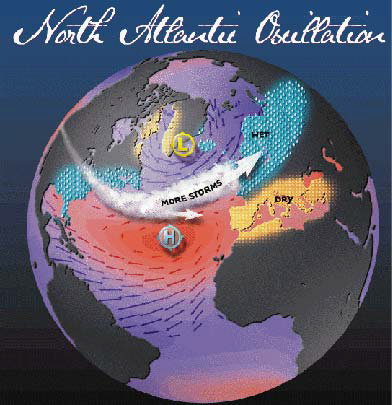 |
||
|
What kind of climate is predicted for the future? |
||
|
Most studies, including the Intergovernmental Panel on Climate Change (IPCC), simulate a further increase in global air temperatures. For Sweden, climate model simulations are available for the next 100 years from the Swedish Regional Climate Modelling Programme (Sweclim). They simulate an increase in especially winter air temperatures by up to 5°C in the north of Sweden until 2100. They also simulate an increase in precipitation during the next 100 years with large regional differences (on a yearly average about 20 % in the north and about 10 % in the south of the country). Variations in the winter climate in countries surrounding the North Atlantic have often been related to variations in the North Atlantic Oscillation (NAO). The NAO refers to swings in the atmospheric sea level pressure difference between the Arctic and the subtropical Atlantic. The swings are most noticeable during the boreal cold season (November-April) and are associated with changes in the wind speed and direction, in winter air temperatures and in winter precipitation. Sweden is one of the countries where the NAO has a strong effect on the winter climate. More information about the NAO can be found on the North Atlantic Oscillation thematic web site. |
|
|
 Picture taken from
Picture taken from